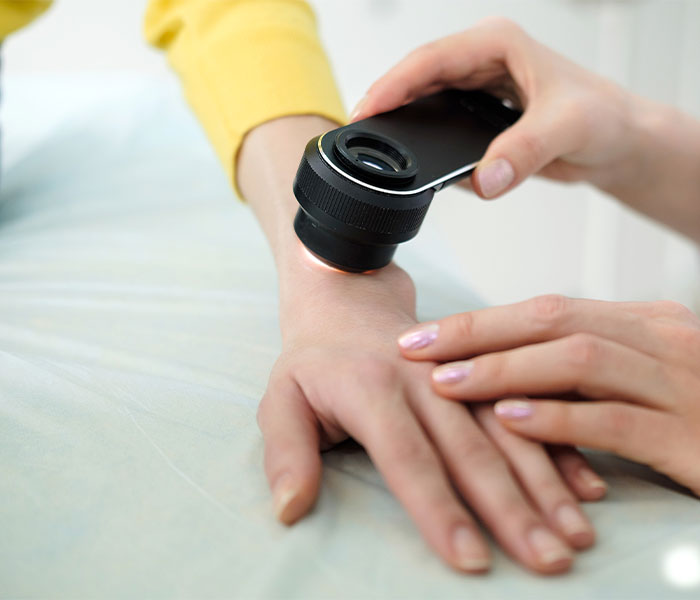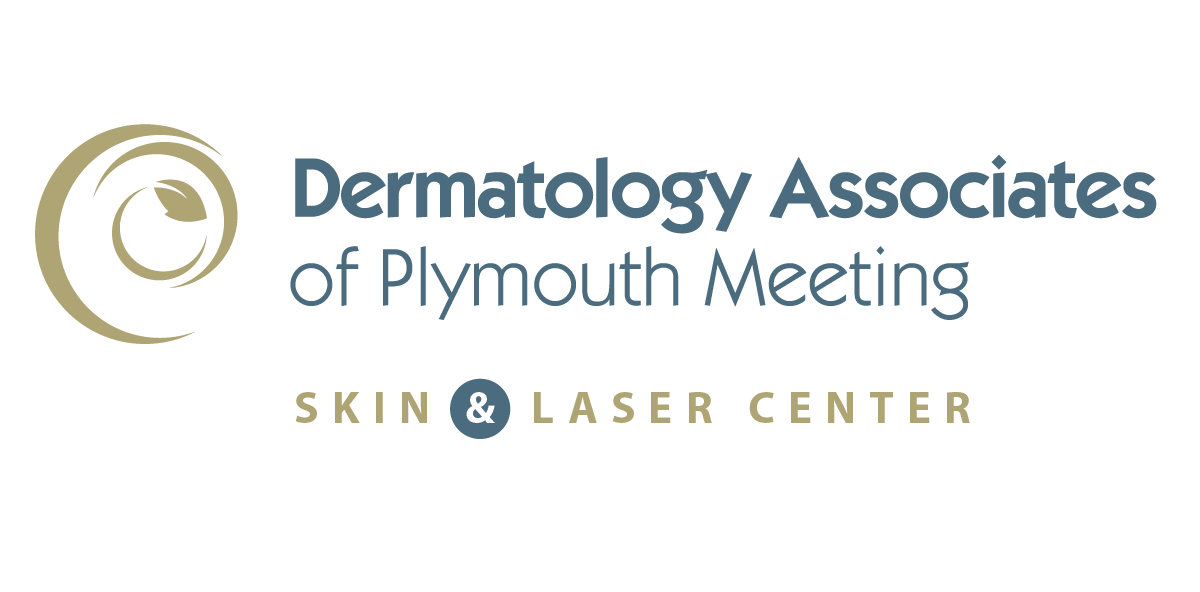Conditions
What is Actinic Keratosis?
Rough, scaly patches of skin that develop from years of exposure to the sun are often diagnosed as actinic keratosis. If you have never received this type of diagnosis before, you might be worried or concerned; however, the vast majority of cases usually cause no symptoms and rarely become cancerous. Actinic keratoses are most often found on areas of the skin that are routinely exposed to the sun, such as the face, ears, forearms, hands, neck and scalp.

How to Identify Actinic Keratosis
Identifying actinic keratosis can be tricky and is best left to your board-certified dermatologist or licensed physician assistant at Dermatology Associates of Plymouth Meeting. The reason that it is best to not self-diagnose is because cancerous lesions such as basal or squamous cell carcinoma, or even deadly melanoma, can be mistaken for actinic keratoses. An actinic keratosis can appear in a variety of forms, including:
- A rough, dry or scaly patch of skin, usually less than an inch in diameter
- A hard surface resembling a wart
- A pink, red or brown colored patch of skin
- A slightly raised bump on the top layer of skin
- An itchy or burning area of skin
Reasons for Actinic Keratosis
The primary cause of actinic keratoses is a history of unprotected exposure to ultraviolet (UV) radiation through sunlight or indoor tanning. People who have fair skin, a bald scalp or thinning hair are at higher risk of developing an actinic keratosis. They also appear more commonly in people who are age 40 and older and in people who may have a weakened immune system due to a medical condition or medications.
How to Treat Actinic Keratosis
Liquid Nitrogen
Liquid Nitrogen (also known as “freezing”) applied via a cotton swab or a spray to the actinic keratosis and some of the skin around it, which typically feels like an ice cube touching your skin for a few seconds.
Topical Creams
Topical creams such as 5% fluorouracil (efudex) or imiquimod (aldara) applied to the actinic keratosis to block the growth of abnormal cells. These creams, typically applied for several weeks, are meant to cause a rash to the site of application during the application period. Once treatment is completed, the application site heals with normal feeling and without scarring.
Photodynamic Therapy (PDT)
Photodynamic therapy (PDT), which involves applying a topical medication that is activated by light to kill cancer cells. PDT treatments can cause burning, tingling or prickling sensations during the first few minutes of treatment, but any discomfort usually subsides after a few hours. Depending on the extent of the sun damage in the treatment area, there is a mild-to-moderate rash that develops in the treatment area. Usually the skin is healed in one week. Generally, this treatment is repeated 2-3 times for best results. Learn More
Electrodesiccation and Curettage
Electrodesiccation and curettage, usually reserved for thick and single lesions, is an easy procedure in which your dermatologist scrapes the surface of the actinic keratosis with a curette (a spoon-shaped instrument) and cauterizes the area after successfully removing the pre-cancerous tissue.
Chemical Peels
A superficial chemical peel treatment helps exfoliate and accelerate the removal of dead skin cells. They have been shown to prevent the breakdown of collagen and stimulate the process of natural skin renewal. Unlike the deeper phenol of a TCA peel, the depth of penetration is kept to the epidermal or superficial dermis, eliminating the crusting or peeling that may happen with deeper peels. Learn More
Halo
As the only hybrid fractional laser of its kind, HALO™ Pro combines tunable non-ablative and ablative wavelengths to the same microscopic treatment zone to maximize results and reduce downtime. Learn More
The Importance of a Skin Check
Even though actinic keratoses are benign, they should still be taken seriously. If you suspect a skin lesion could be an actinic keratosis, schedule a skin exam today during which your board-certified dermatologist or licensed physician assistant can make a professional determination. The lesion you think may be an actinic keratosis could actually be skin cancer—even melanoma, which is the deadliest form of skin cancer that frequently develops as a skin-colored, pink or white lesion similar to an actinic keratosis. Rather than take a chance on your health, schedule a skin exam in which any questionable skin lesions can be analyzed by our skin experts.
Schedule a Skin Exam Today
Schedule your appointment at Dermatology Associates of Plymouth Meeting to schedule a professional skin check. Many actinic keratoses can be treated at your appointment in the comfort of our office. We are eager to help you achieve optimal health by reducing your risks of developing skin cancer through prevention, diagnosis and treatment.
